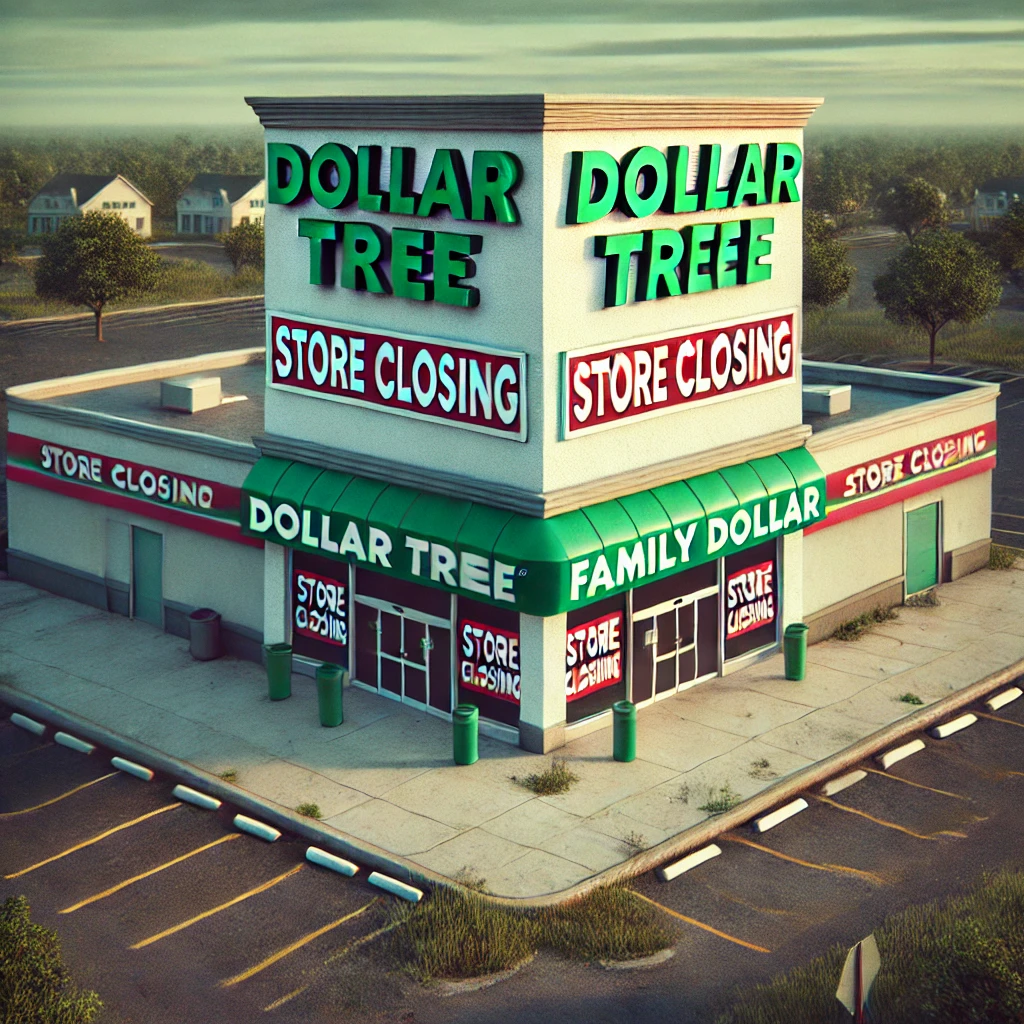Dollar Tree and Family Dollar Stores Closing
The news of Dollar Tree and Family Dollar stores closing has garnered significant attention. These stores have long been considered staples of affordability and convenience in communities across the United States. However, economic shifts, changing consumer behaviors, and operational challenges are leading to store closures. This article explores the reasons behind these closures, their potential impacts, and the future of the dollar store model.
The Evolution of Dollar Stores
Dollar stores like Dollar Tree and Family Dollar rose to prominence by offering low-cost items to budget-conscious shoppers. With the promise of affordability and accessibility, these stores catered primarily to low- and middle-income households. Over the years, they expanded rapidly, opening thousands of locations across urban, suburban, and rural areas.
Dollar Tree, established in 1986, differentiated itself with its strict $1 pricing model, while Family Dollar offered slightly higher-priced items, allowing for a broader product selection. Together, they became cornerstones of the discount retail market.
Why Are Dollar Tree and Family Dollar Stores Closing?
Several factors are contributing to the closure of these stores, ranging from internal challenges to external market pressures.
1. Inflation and Rising Costs
Inflation has driven up the cost of goods, shipping, and labor, making it difficult for dollar stores to maintain their low-price promise. In late 2021, Dollar Tree raised its $1 price point to $1.25, signaling the strain of rising operational costs. Although this adjustment helped sustain some profit margins, it alienated some loyal customers and put additional pressure on the brand.
2. Shifting Consumer Preferences
While dollar stores thrived during economic downturns, the post-pandemic era has seen shifts in consumer behavior. Many shoppers are now prioritizing quality and value over rock-bottom prices. Moreover, the rise of online shopping has impacted foot traffic, as consumers increasingly turn to e-commerce giants like Amazon for convenience and competitive pricing.
3. Overexpansion
Rapid expansion led to market saturation, with multiple Dollar Tree and Family Dollar stores often located in close proximity. In smaller communities, this oversaturation diluted profits and strained resources, making some locations unsustainable.
4. Regulatory and Safety Concerns
Dollar stores have faced growing scrutiny from local governments and communities. Critics argue that these stores contribute to “food deserts” by prioritizing processed goods over fresh produce. Additionally, safety concerns, such as inadequate staffing and crime incidents, have further pressured these retailers to reassess their operations.
Impacts of Store Closures
The closure of Dollar Tree and Family Dollar stores carries significant implications for various stakeholders.
1. Community Consequences
In many low-income neighborhoods, dollar stores serve as primary shopping destinations. Their closure could leave residents with fewer affordable options for everyday necessities, exacerbating financial strain. Rural areas, in particular, are at risk of losing access to essential goods.
2. Economic Ripples
Store closures often result in job losses, affecting employees and local economies. Additionally, vacant retail spaces can lead to urban blight, reducing property values and discouraging new business investments.
3. Competitor Gains
As Dollar Tree and Family Dollar scale back, competitors such as Dollar General and discount grocers like Aldi may capitalize on the opportunity to fill the gap. These competitors often offer a wider selection of products, including fresh food, which could attract former Dollar Tree and Family Dollar customers.
Steps Taken by Dollar Tree and Family Dollar
The parent company of both brands, Dollar Tree, Inc., is implementing several strategies to address challenges and sustain profitability.
1. Store Optimization
Dollar Tree, Inc. has announced plans to close underperforming stores while investing in remodeling and expanding profitable locations. By enhancing store layouts and introducing new product categories, they aim to attract a broader customer base.
2. Adopting a Dual-Price Strategy
The shift to a $1.25 price point has allowed Dollar Tree to stock higher-quality items. Family Dollar, on the other hand, is diversifying its pricing strategy to include $3 and $5 items, catering to varying consumer preferences.
3. Improved Inventory Management
Efforts are underway to streamline supply chains and improve inventory management. By reducing stockouts and enhancing product availability, the company hopes to retain customer loyalty.
4. Community Engagement
Dollar Tree and Family Dollar are working to address criticisms by partnering with local organizations and exploring ways to offer healthier food options in certain locations. These initiatives aim to rebuild trust and strengthen ties with communities.
The Future of Dollar Stores
Despite challenges, the dollar store industry remains resilient. According to market analysts, demand for value-focused retailing is unlikely to disappear entirely. However, success will depend on adapting to new realities.
1. Embracing E-Commerce
The integration of e-commerce platforms and curbside pickup services could help dollar stores compete with online retailers. Investing in digital infrastructure will be crucial for reaching tech-savvy consumers.
2. Expanding Product Offerings
To meet evolving consumer expectations, dollar stores must diversify their product lines. Introducing fresh food options, household essentials, and even private-label brands can boost appeal and profitability.
3. Sustainability Efforts
As sustainability becomes a priority for many shoppers, dollar stores may need to adopt eco-friendly practices. Offering reusable bags, reducing plastic packaging, and sourcing sustainable products could enhance brand image.
Conclusion
The closures of Dollar Tree and Family Dollar stores highlight broader shifts in the retail landscape. While these stores face significant challenges, they also have opportunities to evolve and remain relevant. By addressing operational inefficiencies, embracing innovation, and staying attuned to consumer needs, Dollar Tree, Inc. can navigate the current difficulties and shape a more sustainable future. For now, the closures serve as a reminder of the delicate balance between affordability, accessibility, and adaptability in the retail sector.










